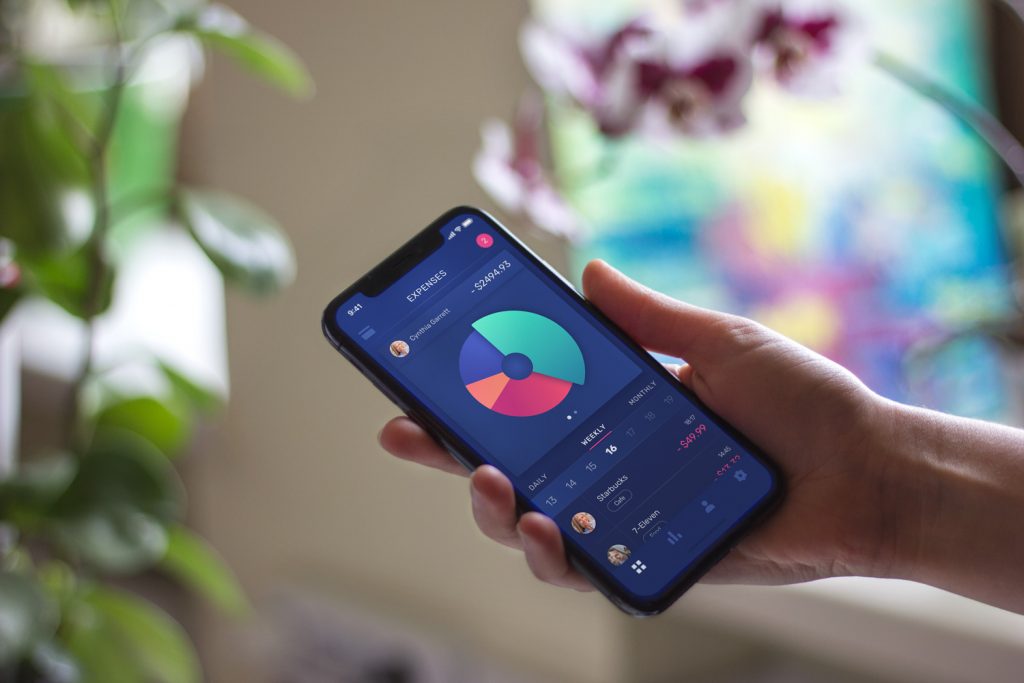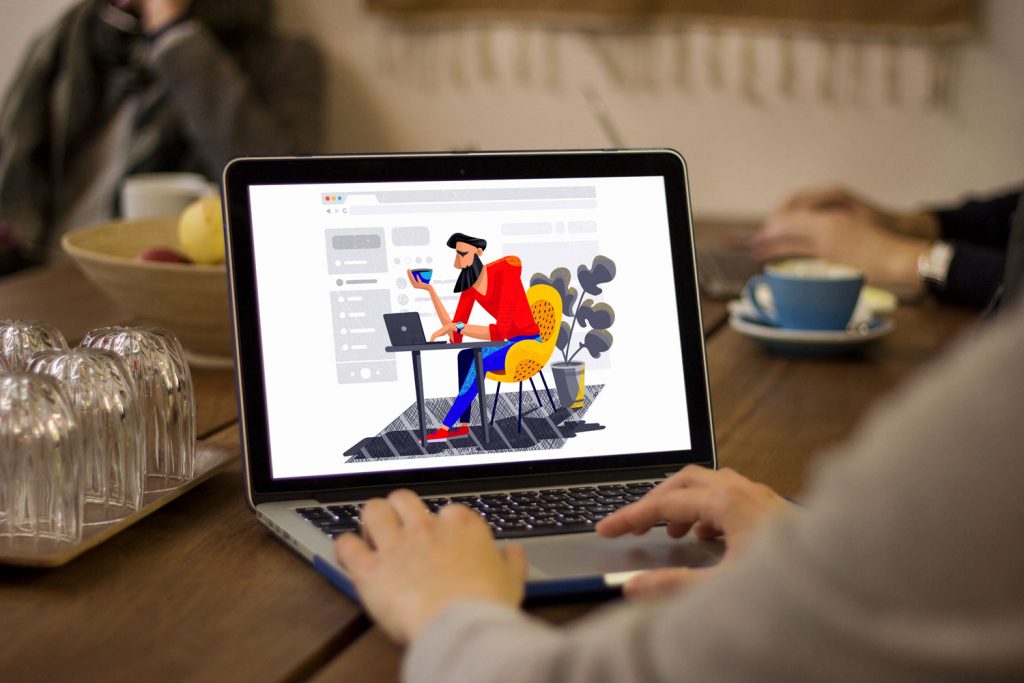In creative jobs, design in particular, inspiration is one of the keys to productivity. Perhaps, one of the most productive kinds of inspiration is the one taken from experts, successful people who have experienced what they share. Today we’re going to recommend you a set of interesting and informative TED-talks that we think could be interesting, useful and helpful for designers as well as other creative people! Should be said, TED is a great resource of wise and informative things to learn in diverse directions and spheres, so we never miss the chance to share our findings there.
Here we offer you 20 TED-talks all with the descriptions given on the TED website. Most of them are already classic, sometimes even could be called legendary, and that makes them even more precious as they have been successfully checked with the time and practice. The ability to analyze take the best from the past usually broadens the creative horizons and becomes a solid foundation from innovative thinking. We also added some prominent thoughts full of wisdom and practical experience. So, let’s move on!
Don Norman: 3 ways good design makes you happy
In this talk from 2003, design critic Don Norman turns his incisive eye toward beauty, fun, pleasure and emotion, as he looks at design that makes people happy. He names the three emotional cues that a well-designed product must hit to succeed.
Some thoughts to remember:
The middle level of processing is the behavioral level and that’s actually where most of our stuff gets done. Visceral is subconscious, you’re unaware of it. Behavioral is subconscious, you’re unaware of it.Almost everything we do is subconscious. I’m walking around the stage — I’m not attending to the control of my legs. I’m doing a lot; most of my talk is subconscious; it has been rehearsed and thought about a lot. Most of what we do is subconscious. Automatic behavior — skilled behavior — is subconscious, controlled by the behavioral side. And behavioral design is all about feeling in control,which includes usability, understanding — but also the feel and heft.
Emotion is all about acting; emotion is really about acting. It’s being safe in the world. Cognition is about understanding the world, emotion is about interpreting it — saying good, bad, safe, dangerous, and getting us ready to act, which is why the muscles tense or relax. And that’s why we can tell the emotion of somebody else — because their muscles are acting, subconsciously, except that we’ve evolved to make the facial muscles really rich with emotion.
James Patten: The best computer interface? Maybe … your hands
“The computer is an incredibly powerful means of creative expression,” says designer and TED Fellow James Patten. But right now, we interact with computers, mainly, by typing and tapping. In this nifty talk and demo, Patten imagines a more visceral, physical way to bring your thoughts and ideas to life in the digital world, taking the computer interface off the screen and putting it into your hands.
Some thoughts to remember:
And when you think about it, this makes a lot of sense, that using specialized physical objects would help people use an interface more easily. I mean, our hands and our minds are optimized to think about and interact with tangible objects.
Margaret Gould Stewart: How giant websites design for you (and a billion others, too)
Facebook’s “like” and “share” buttons are seen 22 billion times a day, making them some of the most-viewed design elements ever created. Margaret Gould Stewart, Facebook’s director of product design, outlines three rules for design at such a massive scale — one so big that the tiniest of tweaks can cause global outrage, but also so large that the subtlest of improvements can positively impact the lives of many.
Some thoughts to remember:
Now, the first thing that you need to know about designing at scale is that the little things really matter.
The next thing that you need to understand as a principle is that when you introduce change, you need to do it extraordinarily carefully. Now I often have joked that I spend almost as much time designing the introduction of change as I do the change itself, and I’m sure that we can all relate to that when something that we use a lot changes and then we have to adjust. The fact is, people can become very efficient at using bad design, and so even if the change is good for them in the long run, it’s still incredibly frustrating when it happens, and this is particularly true with user-generated content platforms,because people can rightfully claim a sense of ownership. It is, after all, their content.
Matthew Carter: My life in typefaces
Pick up a book, magazine or screen, and more than likely you’ll come across some typography designed by Matthew Carter. In this charming talk, the man behind typefaces such as Verdana, Georgia and Bell Centennial (designed just for phone books — remember them?), takes us on a spin through a career focused on the very last pixel of each letter of a font.
Some thoughts to remember:
You know, at times of technical innovation, designers want to be influenced by what’s in the air. We want to respond. We want to be pushed into exploring something new.
Aris Venetikidis: Making sense of maps
Map designer Aris Venetikidis is fascinated by the maps we draw in our minds as we move around a city — less like street maps, more like schematics or wiring diagrams, abstract images of relationships between places. How can we learn from these mental maps to make better real ones? As a test case, he remakes the notorious Dublin bus map. (Filmed at TEDxDublin)
Some thoughts to remember:
So for a successful public transport map, we should not stick to accurate representation, but design them in the way our brains work.
Stefan Sagmeister: Happiness by Design
Graphic designer Stefan Sagmeister takes the audience on a whimsical journey through moments of his life that made him happy — and notes how many of these moments have to do with good design.
Some thoughts to remember:
You know, one is: just working without pressure. Then: working concentrated, without being frazzled. Or, as Nancy said before, like really immerse oneself into it. Try not to get stuck doing the same thing — or try not get stuck behind the computer all day. This is, you know, related to it: getting out of the studio. Then, of course, trying to, you know, work on things where the content is actually important for me. And being able to enjoy the end results.
Tony Fadell: The first secret of design is… noticing
As human beings, we get used to “the way things are” really fast. But for designers, the way things are is an opportunity … Could things be better? How? In this funny, breezy talk, the man behind the iPod and the Nest thermostat shares some of his tips for noticing — and driving — change.
Some thoughts to remember:
Why do we get used to everyday things? Well as human beings, we have limited brain power. And so our brains encode the everyday things we do into habits so we can free up space to learn new things. It’s a process called habituation and it’s one of the most basic ways, as humans, we learn.
My first tip is to look broader. You see, when you’re tackling a problem, sometimes, there are a lot of steps that lead up to that problem. And sometimes, a lot of steps after it. If you can take a step back and look broader, maybe you can change some of those boxes before the problem. Maybe you can combine them. Maybe you can remove them altogether to make that better.
Our challenge is to wake up each day and say, “How can I experience the world better?”
Chris Urmson: How a driverless car sees the road
Statistically, the least reliable part of the car is … the driver. Chris Urmson heads up Google’s driverless car program, one of several efforts to remove humans from the driver’s seat. He talks about where his program is right now, and shares fascinating footage that shows how the car sees the road and makes autonomous decisions about what to do next.
Some thoughts to remember:
The better the technology gets, the less reliable the driver is going to get.So by just making the cars incrementally smarter, we’re probably not going to see the wins we really need.
…it’s not to say that the driver assistance systems aren’t going to be incredibly valuable. They can save a lot of lives in the interim, but to see the transformative opportunity to help someone like Steve get around, to really get to the end case in safety, to have the opportunity to change our cities and move parking out and get rid of these urban craters we call parking lots, it’s the only way to go.
David Carson: Design and discovery
Great design is a never-ending journey of discovery — for which it helps to pack a healthy sense of humor. Sociologist and surfer-turned-designer David Carson walks through a gorgeous (and often quite funny) slide deck of his work and found images.
Some thoughts to remember:
I’m a big believer in the emotion of design, and the message that’s sent before somebody begins to read,before they get the rest of the information; what is the emotional response they get to the product, to the story, to the painting — whatever it is.
Why not experiment? Why not have some fun? Why not put some of yourself into the work? And when I was teaching, I used to always ask the students, What’s the definition of a good job? And as teachers, after you get all the answers, you like to give them the correct answer. And the best one I’ve heard — I’m sure some of you have heard this –the definition of a good job is: If you could afford to — if money wasn’t an issue — would you be doing that same work? And if you would, you’ve got a great job. And if you wouldn’t, what the heck are you doing? You’re going to be dead a really long time.
Philippe Starck: Design and destiny
Designer Philippe Starck — with no pretty slides to show — spends 18 minutes reaching for the very roots of the question “Why design?” Listen carefully for one perfect mantra for all of us, genius or not.
Some thoughts to remember:
And here is something: nobody is obliged to be a genius, but everybody is obliged to participate.
With billions of people who have been born, worked, lived and died before us, these people who have worked so much, we have now bring beautiful things, beautiful gifts, we know so many things. We can say to our children, OK, done, that was our story. That passed.Now you have a duty: invent a new story. Invent a new poetry. The only rule is, we have not to have any idea about the next story. We give you white pages. Invent. We give you the best tools, the best tools, and now, do it.
David Kelley: Human-centered design
IDEO’s David Kelley says that product design has become much less about the hardware and more about the user experience. He shows video of this new, broader approach, including footage from the Prada store in New York.
Some thoughts to remember:
…it’s really exciting that we’re taking a more human-centered approach to design, that we’re including behaviors and personalities in the things we do, and I think this is great. Designers are more trusted and more integrated into the business strategy of companies
Linda Hill: How to manage for collective creativity
What’s the secret to unlocking the creativity hidden inside your daily work, and giving every great idea a chance? Harvard professor Linda Hill, co-author of “Collective Genius,” has studied some of the world’s most creative companies to come up with a set of tools and tactics to keep great ideas flowing — from everyone in the company, not just the designated “creatives.”
Some thoughts to remember:
Leading innovation is not about creating a vision, and inspiring others to execute it. But what do we mean by innovation? An innovation is anything that is both new and useful. It can be a product or service. It can be a process or a way of organizing. It can be incremental, or it can be breakthrough. We have a pretty inclusive definition.
Innovation is not about solo genius, it’s about collective genius.
What we know is, at the heart of innovation is a paradox. You have to unleash the talents and passions of many people and you have to harness them into a work that is actually useful. Innovation is a journey. It’s a type of collaborative problem solving, usually among people who have different expertise and different points of view.
Ken Robinson: Do schools kill creativity?
Sir Ken Robinson makes an entertaining and profoundly moving case for creating an education system that nurtures (rather than undermines) creativity.
Some thoughts to remember:
I don’t mean to say that being wrong is the same thing as being creative. What we do know is, if you’re not prepared to be wrong, you’ll never come up with anything original — if you’re not prepared to be wrong. And by the time they get to be adults, most kids have lost that capacity. They have become frightened of being wrong. And we run our companies like this. We stigmatize mistakes. And we’re now running national education systems where mistakes are the worst thing you can make. And the result is that we are educating people out of their creative capacities.
We know three things about intelligence. One, it’s diverse. We think about the world in all the ways that we experience it. We think visually, we think in sound, we think kinesthetically. We think in abstract terms, we think in movement. Secondly, intelligence is dynamic. If you look at the interactions of a human brain,as we heard yesterday from a number of presentations, intelligence is wonderfully interactive. The brain isn’t divided into compartments. In fact, creativity — which I define as the process of having original ideas that have value — more often than not comes about through the interaction of different disciplinary ways of seeing things.
Young-ha Kim: Be an artist, right now!
Why do we ever stop playing and creating? With charm and humor, celebrated Korean author Young-ha Kim invokes the world’s greatest artists to urge you to unleash your inner child — the artist who wanted to play forever. (Filmed at TEDxSeoul.)
Some thoughts to remember:
We don’t know why we should be artists, but we have many reasons why we can’t be. Why do people instantly resist the idea of associating themselves with art? Perhaps you think art is for the greatly gifted or for the thoroughly and professionally trained. And some of you may think you’ve strayed too far from art. Well you might have, but I don’t think so. This is the theme of my talk today. We are all born artists.
David McCandless: The beauty of data visualization
David McCandless turns complex data sets (like worldwide military spending, media buzz, Facebook status updates) into beautiful, simple diagrams that tease out unseen patterns and connections. Good design, he suggests, is the best way to navigate information glut — and it may just change the way we see the world.
Some thoughts to remember:
The eye is exquisitely sensitive to patterns in variations in color, shape and pattern. It loves them, and it calls them beautiful. It’s the language of the eye. If you combine the language of the eye with the language of the mind, which is about words and numbers and concepts, you start speaking two languages simultaneously, each enhancing the other. So, you have the eye, and then you drop in the concepts. And that whole thing — it’s two languages both working at the same time.
Aaron Koblin: Visualizing ourselves … with crowd-sourced data
Artist Aaron Koblin takes vast amounts of data — and at times vast numbers of people — and weaves them into stunning visualizations. From elegant lines tracing airline flights to landscapes of cell phone data, from a Johnny Cash video assembled from crowd-sourced drawings to the “Wilderness Downtown” video that customizes for the user, his works brilliantly explore how modern technology can make us more human.
Some thoughts to remember:
Our lives are being driven by data, and the presentation of that data is an opportunity for us to make some amazing interfaces that tell great stories.
…an interface can be a powerful narrative device. And as we collect more and more personally and socially relevant data, we have an opportunity, and maybe even an obligation, to maintain the humanity and tell some amazing stories as we explore and collaborate together.
Golan Levin: Art that looks back at you
Golan Levin, an artist and engineer, uses modern tools — robotics, new software, cognitive research — to make artworks that surprise and delight. Watch as sounds become shapes, bodies create paintings, and a curious eye looks back at the curious viewer.
Some thoughts to remember:
I’m an artist, and I’m really interested in expanding the vocabulary of human action, and basically empowering people through interactivity. I want people to discover themselves as actors, as creative actors, by having interactive experiences.
Milton Glaser: Using design to make ideas new
From the TED archives: The legendary graphic designer Milton Glaser dives deep into a new painting inspired by Piero della Francesca. From here, he muses on what makes a convincing poster, by breaking down an idea and making it new.
Some thoughts to remember:
Sometimes, in the middle of a resistant problem, I write down things that I know about it. But you can see the beginning of an idea there, because you can see the word “new” emerging from the “old.” That’s what happens. There’s a relationship between the old and the new; the new emerges from the context of the old.
Tim Brown: Designers — think big!
Tim Brown says the design profession has a bigger role to play than just creating nifty, fashionable little objects. He calls for a shift to local, collaborative, participatory “design thinking” — starting with the example of 19th-century design thinker Isambard Kingdom Brunel.
Some thoughts to remember:
Systems thinkers who were reinventing the world, to a priesthood of folks in black turtlenecks and designer glasses working on small things. As our industrial society matured, so design became a profession and it focused on an ever smaller canvas until it came to stand for aesthetics, image and fashion.
So if human need is the place to start, then design thinking rapidly moves on to learning by making. Instead of thinking about what to build, building in order to think. Now, prototypes speed up the process of innovation, because it is only when we put our ideas out into the world that we really start to understand their strengths and weaknesses. And the faster we do that, the faster our ideas evolve.
Richard Seymour: How beauty feels
A story, a work of art, a face, a designed object — how do we tell that something is beautiful? And why does it matter so much to us? Designer Richard Seymour explores our response to beauty and the surprising power of objects that exhibit it.
Some thoughts to remember:
Form is function. It informs, it tells us, it supplies us answers before we’ve even thought about it. And so I’ve stopped using words like “form,” and I’ve stopped using words like “function” as a designer. What I try to pursue now is the emotional functionality of things. Because if I can get that right, I can make them wonderful, and I can make them repeatedly wonderful.
As we can see, the set of speeches is quite diverse: some of them are giving the examples of designs, some unveil the life and routine case of famous experts, some bring general ideas on creativity and design process aspects. Anyway, they enrich us with the ideas which bring us closer to the user, to creating efficient design and taking everything possible from our natural creativity.






